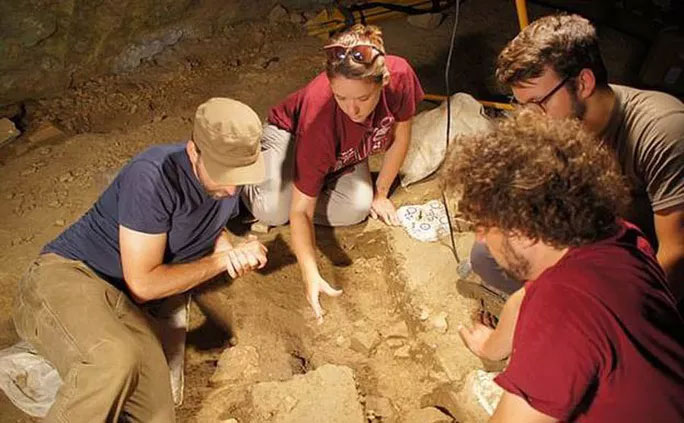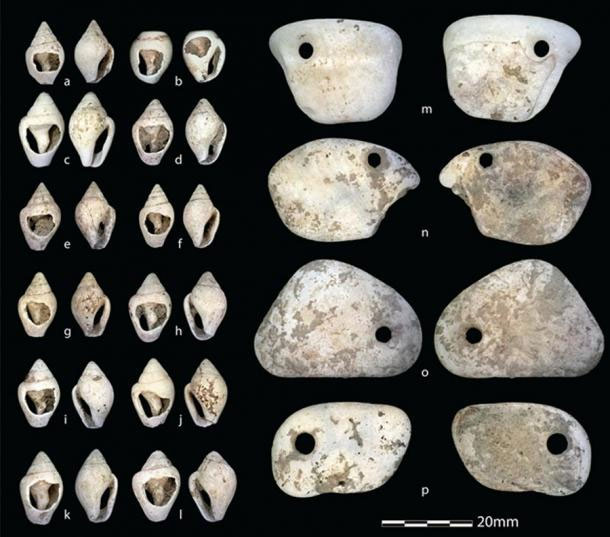A meticulously built grave dating back 10,000 years, containing the remains of a newborn girl and a collection of unusual treasures, represents a significant breakthrough in the field of archaeology.
The grave was discovered in the Arma Veirana Cave in Northwestern Italy in early 2017 and has been studied in detail over the past several years. In a recently published article in Scientific Reports, the grave marks a groundbreaking evolutionary step for humanity.

Archaeologists at the site – (Photo: Scientific Reports).
Burial customs represent a significant cultural advancement for humanity, and the burial of a newborn is even more remarkable, reflecting the awareness of people from the Paleolithic era who have been “elevated” considerably, according to Phys.org.
The grave is clearly elaborately constructed. The unfortunate girl rests alongside many unusual grave goods: 60 crafted shell fragments, drilled to be strung together, 4 pendants also made of shell, and an eagle owl claw, which may carry some symbolic meaning.
According to paleontologists Jamie Hodgkins and Caley Orr from the University of Colorado in Denver (USA), the leading authors of the study, these items were made with great care and precision. All show significant wear, indicating they are heirlooms.

Distinctive grave goods in the tomb – (Photo: Scientific Reports).
Given the era of the girl, this is a significant treasure trove, showing that she was regarded as a family member, loved and mourned, rather than simply buried like how earlier peoples buried stillborn children.
According to Ancient Origins, the girl’s teeth were found—she has been named Neve—and were dated using radiocarbon dating, indicating she lived around 8,000 years BCE, while a DNA sample from the bones confirmed she was a girl.


















































